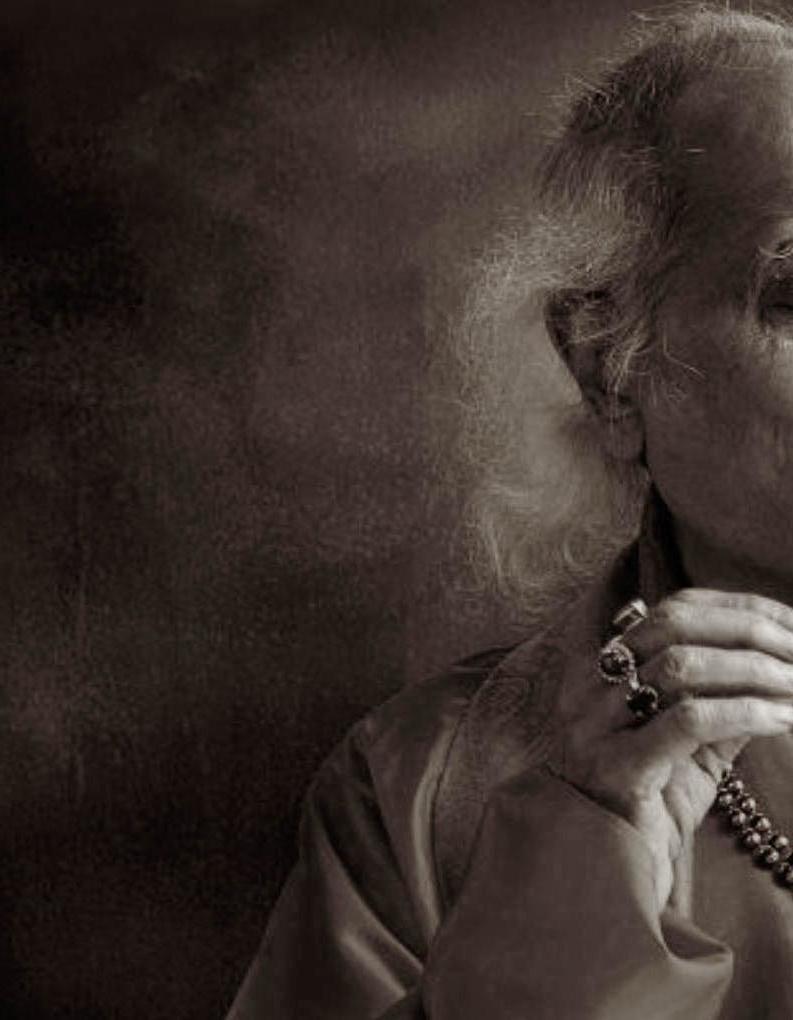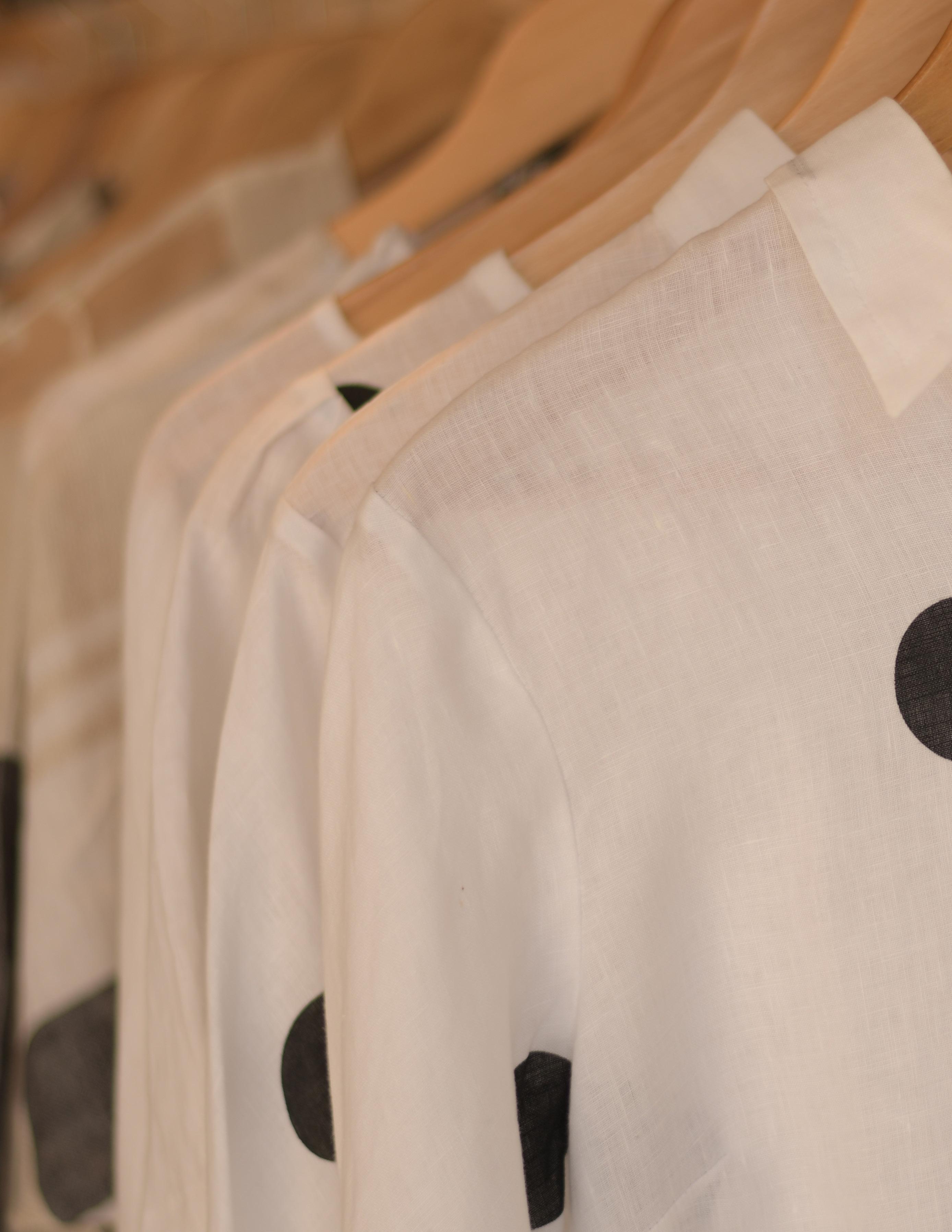
10 minute read
Slow Fashion, quality in lifestyle
Slow fashion is an awareness and approach to fashion, which considers the processes and resources required to make clothing, particularly focusing on sustainability. It involves buying better-quality garments that will last for longer and values fair treatment of people, animals and the planet. It’s also about returning to a personal relationship with fashion. One where trends and seasons don’t matter, but where your ethics and aesthetics seamlessly unite, and you can escape the stress of constant consumption, focusing on the style that truly appeals to you. Slow fashion is something which is not time-based but quality-based. It’s about designing, producing, consuming and living better and also a different approach in which designers, buyers, retailers and consumers are more aware of the impacts of products on workers, communities and ecosystems.Slow fashion is about choice, information, cultural diversity and identity and also something which has a balance between nature and human life. And, now, ‘Ethical fashion’ is often concerned with human and animal rights.

Advertisement



As it relates to humans, ethical fashion applies to working conditions, fair wages and treatment, and no child labor. And, the other one is ‘Sustainable fashion’ which is often concerned with the environmental impact. Opting for fibers and materials that are organic, recycled, or repurposed, limiting harmful chemicals/dyes, reducing energy/water usage and waste, and overall choosing low-impact options wherever possible. Now as a human, as a consumer, it is our responsibility and awareness of what we consume and how much we consume of it. There are ways by which it could be possible, like if we shop less and buy less, be very conscious shopping and buying. By knowing about slow fashion, ethical fashion and sustainable fashion, we can say that khadi is something which is local, natural and very historic.
Khadi means handspun and handwoven cloth. In 1918 Mahatma Gandhi started his movement for Khadi as a relief programme for the poor masses living in India’s villages. Spinning and weaving was elevated to an ideology for self-reliance and self government. In the first half of this century, and in many parts even now, farmers have not enough work to earn their living throughout the year. About four months they may be idle due to the rainless dry season. Spinning would thereby supply the readist occupation; it can easily be learnt. It requires practically no outlay or capital, even an improved spinning wheel can be easily and cheaply made. Gandhi saw it as the end of dependency on foreign materials (symbolizing foreign rule) and thus giving a first lesson or real independence.
Raw materials at that time were entirely exported to England and then re-imported as costly finished cloth, depriving the local population of work and profits on it. Gandhi also felt that in a county where manual labor was looked down upon, it was an occupation to bring high and low, rich and poor together, to show them the dignity of hand-labor.
He asked not only those in need, but of every person to do spinning at least about one hour per day as sacrifice to his county, as duty towards the poor. He hoped for a certain bond of unity between the classes and masses by bridging the gap with a common occupation, and he saw great social value in hand-spinning. It was for economic, cultural and social reasons and not merely political that Gandhi established the Khadi Movement. Thus Khadi is not merely a piece of cloth but a way of life. One of the greatest qualities of Khadi that made it so popular was its existence as a social equalizer. Though it was meant for the masses and could be worn by the poor, it also caught the eye of the sophisticated, thus bringing all under one canopy. Khadi has come a long way, so it has a long history and its importance. It has become an inseparable part of india. Khadi, fabric from the Swadeshi movement has always been thought of as the white, spotless fabric; but it has so much more to its existence.
Khadi is a hand woven natural fibre cloth that is mainly made out of cotton fabric and may also include silk or wool. During independence, Khadi fabric became a symbol of self reliance for Indian pride.

Khadi brought about an idea that the cotton we grew can be spun and woven to form garments and money should not be wasted on buying exuberantly costly clothes. Khadi has shifted to the back shelves of many fashion emporiums, and the front seat was taken by various blend fabrics. Khadi is a very versatile fabric; it has a very unique property of being warm in winters and cool in summers. During the spinning of Khadi, threads are generally interwoven in such a manner that it provides passage of air circulation in the fabric.
Khadi is presently known for its beautiful colors and comfort. It is a timeless piece of the fashion industry. Khadi’s appeal in the fashion industry has become two-fold. On one hand, brands like Fab India are promoting it among foreigners and on the other, several Indian designers are creating an entire wedding trousseau with embroidered Khadi lehengas. Mainstream fashion industry has accepted Khadi, making it a new fashion trend. Khadi fabric is a comfortable, eco-friendly, elegant, versatile and easily adaptable among the fashion designers.
Khadi fabric, over the decades has evolved to be a fashion garment. While Khadi cloth is a symbol of freedom, it currently represents evolving India, that endures India’s ancient weaves, yet embraces contemporary India to find its relevance. Khadi cloth is stylish, crisp and can be used in any form. Each time Khadi fabric appears, it steals the limelight with its simple look, versatility and freshness.
The vibrant color palette it offers makes it the favorite fabric of the recent generation. Khadi fabric has a lot of character and it is an inseparable part of the Indian culture. It as a fabric is a balance of tradition and modernity. Now, Khadi is just not a coarse cloth in dull shades but has become a timeless beauty.

“Do spin and spin after due deliberation. Let those who spin wear khaddar and let no one who wears (khadi) fail to spin”. - Gandhi ji
Dust is the New Gold
“Neutral is an easy and fail-safe option. It’s always classic and you can purchase timeless pieces that will weather many seasons – especially in a time of uncertainty,” Dennett says. “I always strive to look effortless, which is at the core of neutral dressing.” Cozy teddy bear coats, cuddly fisherman’s knits, and even tonal pieces in silk or cotton can be combined to pull off the look . The key to wearing neutral head-to-toe is layering textures and tones, Dennett adds. Since combining multiple luxe nude pieces can skew bland, adding different variations of neutral tones can add volume and sophistication to the look. Our perception of different colours is determined by customs, cultural traditions, and, in many ways, by nature itself. For instance, the colour red is known to increase our pulse rate. Hence, selecting the right colours can improve your mood.
Setting aside all the talk on good looks and appearances, neutral colour also signifies mother nature. When once colour was fabricated more to show the richness, today humans hit a reverse in terms of colour to express. Minimalistic approaches have made things seem much more elegant, classy and spatial enough to bring out a richness in them.
The richness in soil is related to the rich life. Human life is believed to take up life from the soil in the way they were created by the supreme power. And the life between from soil and back to soil, we added colours the brighter, more variant, and the pure hue adds richness to life.






But now the setbacks have brought light into our lives. No more bright colours show off grandness. But more minimalistic elegance shouts out the class and also speaks itself for the humbleness portrayed. “Less is more” term means simplicity is better than elaborate embellishment. In fashion this term has a special place. It stands for Minimalist fashion style in which a person owns limited clothing, footwear and accessories, he/she mix and match those few items and get good use out of them. It is a lifestyle choice where someone chooses to clutter less life. But it is indeed the basis of a good appearance.
Once soil was a significance of the peasants and the poor with neutral colours which were then called lifeless. But now humans have realised the nature of the human brain that gets tired when they see the same colour for a while but neutral colours make a different statement in this context. Even when buildings are given the contemporary style, the random neutral colours are not only to signify the architecture but also to bring the raw and new nature within them.
The raw formative idea has now been the biblical verse around the world. The raw nature and life have cultivated their importance. And so, we have grown closer to the earth. With the acceptance of mother nature in its raw form. No line drawn between the rich or the poor, everyone stands the same with their uniformity in nature. Humans are back to nature, to their mother. With all the nature love and making up life for sustainability, we find comfort and sincere peace of mind when we dissolve within nature being a part of and embracing it like a better and newborn life.
From Dior’s New Look to Hussein Chalayan’s technological minimalism, looks that worship the ‘less is more’ phrase is always there in the history of fashion. For us, it was probably Coco Chanel and her ‘Little Black Dress’ that established a new era in fashion, when Gabrielle decided to strip away any unnecessary garments from the evening dress. These high fashion brands too signify the way our lives change, despite of the bank balance or the luxury we have in our life, we always tend to turn back to what actually is truly ours and what we can take up as ours without all the harms that we could probably cause to the nature and the mankind. And every since then this turn to the love of nature for the betterment of the human race continued throughout. And after 2010, however, fashion is turning back to minimalism, with young designers ready to rediscover the beauty of less, such as Alexander Wang, Raf Simons, Jil Sander, Phoebe Philo and many others among them.


















